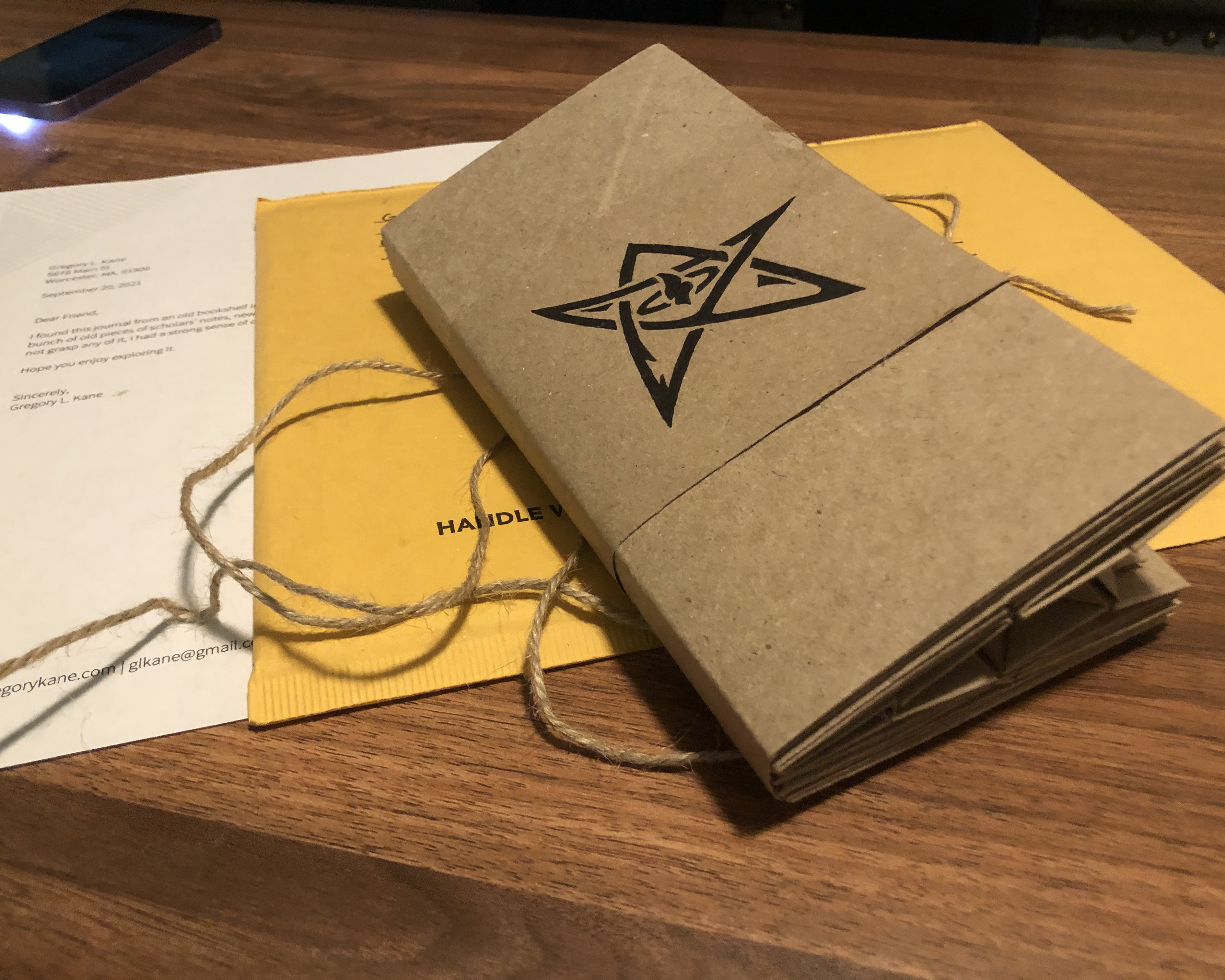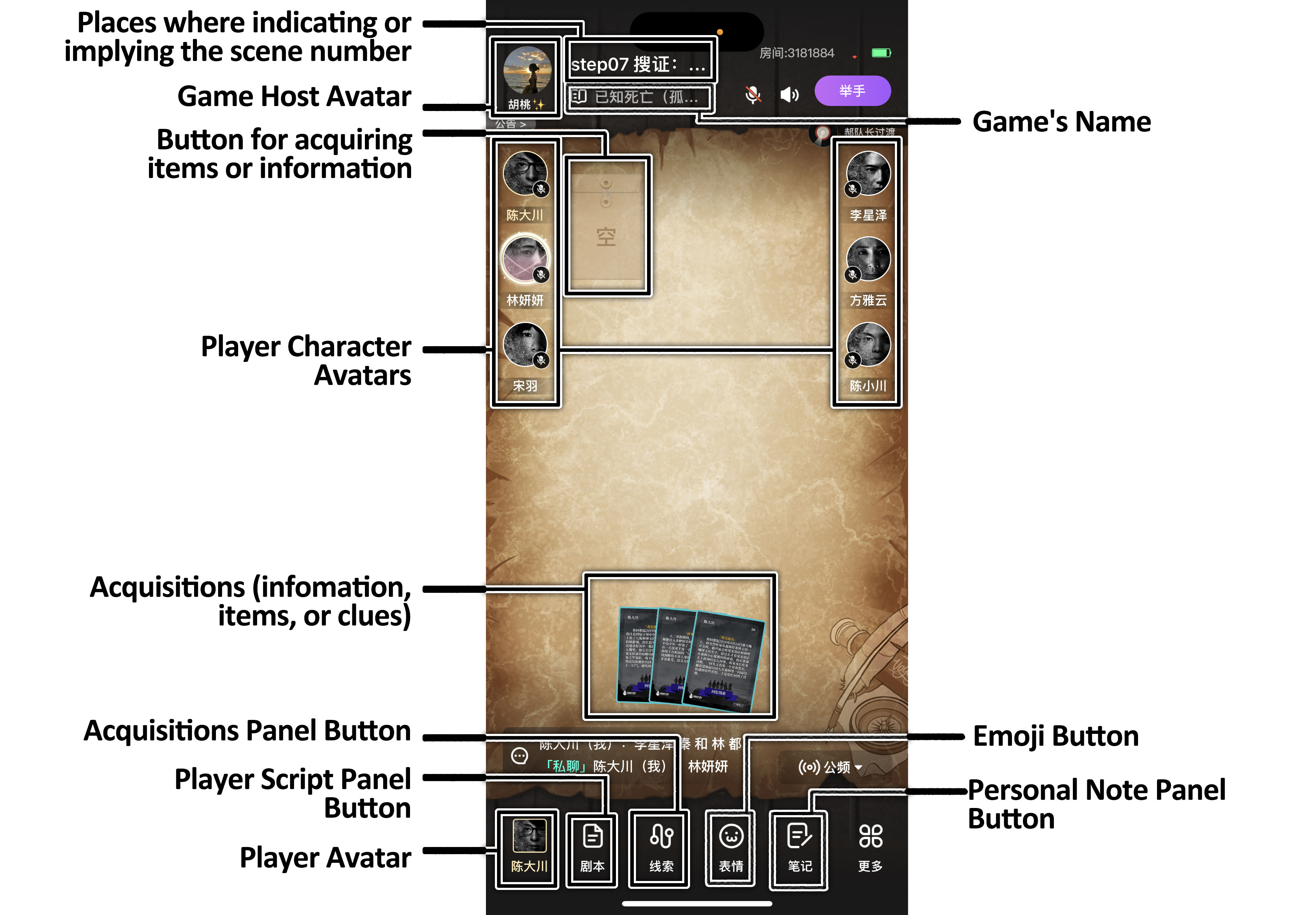Murder Mystery Games
A series of game studies and procedural content generation projects themed around murder mystery to explore the collaborative sensemaking, social deduction, and mixed-initiative storytelling.
Years Active: 2022-2025
I enjoy playing murder mystery and detective-themed games, especially because of the intellectual challenges and how they help me get into the mindset and perspective of a detective as I move through the story. Social deduction games like Mafia are a lot of fun too, though I’m not great at keeping “poker face” (which is crucial to win!).
What I find really interesting is when those deduction mechanics are woven into the narrative (Raging Loop is a great example, highly recommend it). I am interested in how games can mix player agency and puzzle-solving naturally with the storyline, and how all that adds to the worldbuilding overall.
Jubensha
Jubensha games, popular in China, combine storytelling, social deduction, and script-centered group play, sparking widespread interest among gamers and researchers worldwide. However, enthusiasts and researchers have struggled to accurately describe Jubensha, often defaulting to comparisons with genres like murder mystery and live-action role-playing games. This reliance on comparisons hinders efforts to generalize Jubensha or to deconstruct and adapt its unique design components, dynamics of player interaction, and playing experience into other games. I collaborated on a research project on analyzing of Jubensha games, based on a thematic analysis of over 80 Jubensha games accessed through mobile applications and physical copies. We provide summative case studies to exemplify our taxonomy and discuss design implications for Jubensha games for future projects. Our work provides a descriptive tool and vocabulary for researchers and designers to facilitate communication and theorize the evolving Jubensha gaming phenomenon highlighting how gameplay centers collaborative sensemaking. In addition, we argue that the design of game narratives in Jubensha games, including structures in scripts and the evolving performance of players, can be generalized and transferred to the design of a wider range of analog and video games.
Read more about this taxonomy paper at (Liang et al., 2025).
Blueprint
- Scene(s)
- Narrative Strategies:
- Linear Narrative
- Reverse
- Chronology
- Multiperspectivity
- Player Goals:
- Multi-scene Goals
- Single-scene Goals
- Optional Goals
Mechanics
- Scriptreading (读本)
- Tablereading (小剧场)
- Investigation (搜证)
- Player Discussion (讨论)
- Poll (投票)
Interface
- Story or narrative content
- Graphic assets
- Audio assets
- Other assets
Player ⇄ Game
- Scripted Narrative Involvement
- Ludic Narrative Involvement
- Spatial Narrative Involvement
Player ⇄ Player
- Affective Narrative Involvement
- Shared Narrative Involvement
- Kinaesthetic Narrative Involvement
Game ⇄ Game
Emotional Journey
- Romantic
- Patriotic
- Sympathetic
Balanced
- Faction-confronting
- Resource-managing
- Character-developing
Intellectual Journey
- Honkaku
- Henkaku
- Shin-Honkaku
In 2022, I conducted a study on the localization and creative evolution of the derivative murder mystery game genre, Jubensha, in China. These games have evolved beyond the classic murder mystery party format into a new form of play that emphasizes scripted live-action role-playing, puzzle-solving, intellectual challenges, and creativity in both design and experience. Digital platforms now allow players to participate in virtual Jubensha sessions, where gameplay rules are managed and sometimes adapted by writers within the app itself. Meanwhile, in-person versions have sparked new markets for renting and hosting immersive game experiences, often blending elements of escape rooms and tourism. My study explored what makes these games distinct by paying special attention to in-game environments, external contexts, and user dynamics to understand the processes of localization and innovation in this evolving genre.
I presented this research in a talk entitled “The Importation of Murder Mystery Games in China – Game Localization and Creativity” at the Canadian Game Studies Association Annual Conference in June 2022.
Mixed-Initiative Situation Puzzle Generator
In addition to traditional murder mystery games, I have also explored how humans and AI can collaboratively create lateral-thinking puzzles, sometimes known as situation puzzles or “What happened?” riddles. Through projects like situation-puzzle-generator, I experimented with large language models as co-designers in puzzle writing, leveraging their ability to brainstorm story elements and generate scenarios.
However, crafting truly engaging puzzles still requires human judgment: AI alone often produces puzzles that are either trivial or nonsensical, lacking the subtle causal logic that makes these games fun. By blending AI-driven generation with human curation and iteration, the process becomes a playful, creative dialogue, allowing both the machine and the designer to surprise each other, and leading to more interesting, solvable puzzles that capture the spirit of classic situation puzzles.
This project was used as a foundation and further developed by a team at the 2024 AI & Game Summer School in Malta.
Collection: A Non-Linear Game with Tangible Crafts


Together with Shano Liang and Dai Tian, we made Collection, an experiment combining non-linear storytelling and origami. It appears as an opened package, with a letter and a treasure box inside. The treasure box contains old pieces of newspaper clips, lab notes, drawings, and segments of a diary, forming a tragedy about the Werners.
Tangible crafts like boxes naturally invite randomization—one could imagine shuffling or drawing pieces to create a new narrative order. In my case, each piece represents a different angle of the same scenario, but it would not be impossible to play with changing the order: letting players encounter the fragments in different sequences could lead them to perceive new causal relationships or meanings, shaping the overall story flow in unique and meaningful ways.
Collection was exhibited at PAX East 2022.
